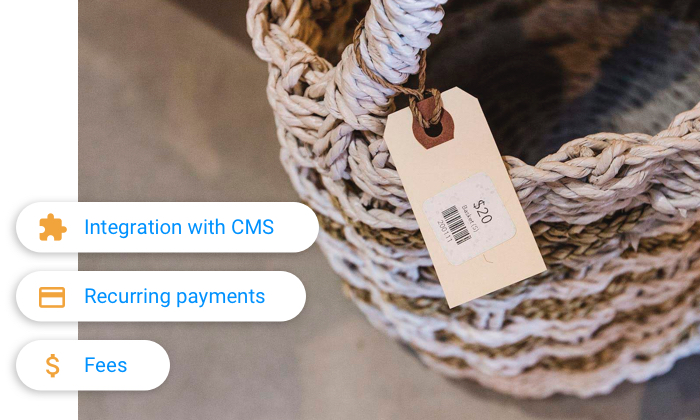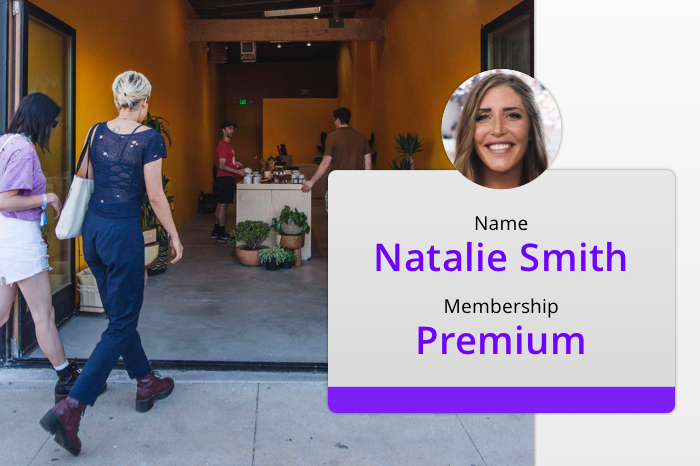While membership sites come with plenty of benefits, such as recurring revenue and unlimited opportunities to scale, getting started can be overwhelming — so much so that more entrepreneurs entertain the idea of creating a membership site than actually pull the trigger.
To lessen the overwhelm, use the following do’s and don’ts as stepping stones to build your own thriving, profitable membership site.

1. Creating your membership content
Don’t: Publish a site and plan to add content later
When you publish your membership site, you’re implying to potential customers that it’s ready for business. Just as you wouldn’t host a grand opening event for a store with empty shelves, you shouldn’t launch your membership site without its content.
That means all of your site’s content is ready to go — even the later stages of the lessons or higher tier content. If you don’t have all your content completed, it means you may not have a bigger picture plan and organization for your content, which would be a big problem down the line.
Here’s why: Things change in the content creation process — you may decide certain content belongs better in an earlier lesson that you’ve already published or that a certain piece should be reserved only for certain tier levels. If you’re haphazardly making these decisions as you go, you’re giving your members a disorienting and incomplete experience.
Do: Create and plan your membership content in advance
Membership sites are content-heavy projects; it takes time to write, design, produce and publish lessons, instructions, web pages, email copy, etc.
It’s important to outline and organize your content in advance so that you have a clear picture of where each piece fits, whether you should “drip” the content sequentially or provide it all at once, what content should be available to which membership tiers, and how you’ll gauge members’ progress and understanding of content.
In addition to taking the time to plan your content, allow yourself the time you need to be thorough and create all of your assets pre-launch. This will ensure that every piece you produce is high quality and provides the value your subscribers are looking for.
Part of planning your content also involves planning all the ancillary pages of your site to ensure your members have a seamless experience. Be sure to have the full-picture view of every piece of content and every page of your site before launching.

2. Web hosting
Don’t: Choose a web host before researching
A bad web host can wreak havoc on your membership site. It can kill your search engine ranking, can cause poor site security that leaves your members vulnerable to viruses, malware and data breaches and can cause your site to load slowly and go down frequently.
All of these things affect your customers’ experiences and, therefore, your company’s profit. Researching web hosts before sealing the deal is a move that could save you in the long run.
Do: Research web hosts before making a decision
Before you choose a web host for your membership site, research the following questions:
- Do they have a good uptime?
- What is their customer service like?
- Are the load times for hosted sites fast or slow?
- Is their site security strong?
- Do they have all the features you need?
If any of the five answers are unsatisfactory, it may be in your best interest to move on and find one that hits all the marks.

3. Selecting and setting up your membership site software
Don’t: Prematurely select a membership software
Selecting a membership software before carefully considering every feature your business needs now and in the future (as you grow) could put you in a tough place: If you come across a feature your software doesn’t have, you will either learn how to live without it, or you’ll need to take the time to completely rebuild your site on a new platform that accommodates your growing company’s needs.
Hint: Neither option is ideal.
Do: Determine your company’s needs and choose your software accordingly
As the linchpin of your membership site, your membership software not only determines how seamless or frustrating your end-user experience is, but it also determines ease of use when it comes to managing and updating content on your site. It’s the engine under your hood — so choose wisely.
Before you lock yourself into a software and start building your content, take the time to write out everything you need your site to include. Perhaps you can’t live without the option to drip content over time, or you need the ability to send automated emails to your subscribers. Whatever your current and future needs may be, you want to make sure your software covers them all.

4. Taking payments
Don’t: Choose a payment option “just because”
Have you ever picked a brand just because it sounded familiar and afterwards realized there were better options out there? You don’t want to do that with your membership site.
Whether you need the option to take different types of payments — such as payment plans, recurring monthly or weekly payments, or one-offs — or simply want to avoid fees as much as possible, you don’t want to be roadblocked by a payment gateway or merchant account that can’t get the job done. Make sure you clearly outline your needs and thoroughly research to find a payment software that meets them.
Do: Match your needs to the best payment option for your specific business
As in selecting your membership software, you should also lay out your company’s expectations for taking payments. This is going to be slightly different for every business, so there’s no one-size-fits-all right answer here. Sites taking one-time membership access payments, for example, will need different payment features than those with ongoing monthly payments.
Before you lock yourself into a payment option, consider the following questions:
- Will your payment processor integrate with your membership software?
- Are you going to be making more than five figures per month?
- What are all the fees associated with this payment option?
- What security will you need to put in place on your own site to ensure the customers are safe making payments?
- Does this option allow you to take recurring payments?

5. The ongoing software and content maintenance
Don’t: Set it and forget it
Although membership sites are known for raking in passive income, there is still some ongoing work and maintenance that shouldn’t be ignored. Leaving your site unattended can land you with outdated content (even if it’s created to be evergreen) and tech issues.
As a membership site owner, it’s important that you’re regularly updating your site’s content, interacting with your members, and maintaining the site’s functionality to keep your members engaged. Although you want each lesson to be completed before launch, bits of information here and there may go out of date over time — and when it does, you’ll want to have a plan to update it.
Do: Refresh and revamp lessons and pages
If you’ve ever exited a page because the content was outdated or the layout looked prehistoric, you’ll understand the importance of keeping your membership site fresh over time. Even small updates — such as making sure your theme and plugins are always compatible with each other if your site is built in WordPress — can make all the difference for your site’s member retention.
Pro tip: If you’re using Ontraport’s integrated Membership Site platform built with Ontraport Pages, you can easily update your content in one place and eliminate the need to frequently update a WordPress theme and plugin integrations, as everything is seamlessly connected.
